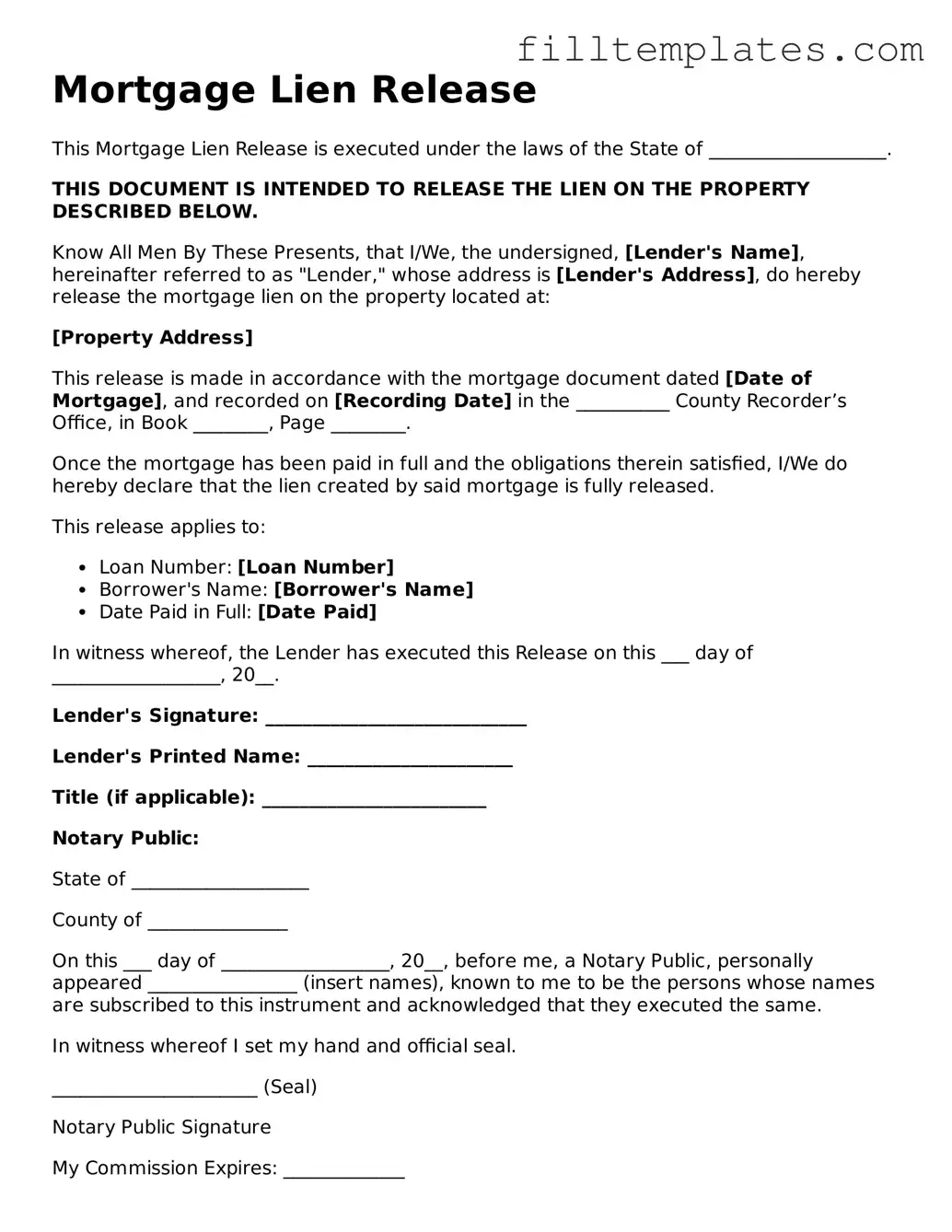Mortgage Lien Release
This Mortgage Lien Release is executed under the laws of the State of ___________________.
THIS DOCUMENT IS INTENDED TO RELEASE THE LIEN ON THE PROPERTY DESCRIBED BELOW.
Know All Men By These Presents, that I/We, the undersigned, [Lender's Name], hereinafter referred to as "Lender," whose address is [Lender's Address], do hereby release the mortgage lien on the property located at:
[Property Address]
This release is made in accordance with the mortgage document dated [Date of Mortgage], and recorded on [Recording Date] in the __________ County Recorder’s Office, in Book ________, Page ________.
Once the mortgage has been paid in full and the obligations therein satisfied, I/We do hereby declare that the lien created by said mortgage is fully released.
This release applies to:
- Loan Number: [Loan Number]
- Borrower's Name: [Borrower's Name]
- Date Paid in Full: [Date Paid]
In witness whereof, the Lender has executed this Release on this ___ day of __________________, 20__.
Lender's Signature: ____________________________
Lender's Printed Name: ______________________
Title (if applicable): ________________________
Notary Public:
State of ___________________
County of _______________
On this ___ day of __________________, 20__, before me, a Notary Public, personally appeared ________________ (insert names), known to me to be the persons whose names are subscribed to this instrument and acknowledged that they executed the same.
In witness whereof I set my hand and official seal.
______________________ (Seal)
Notary Public Signature
My Commission Expires: _____________
